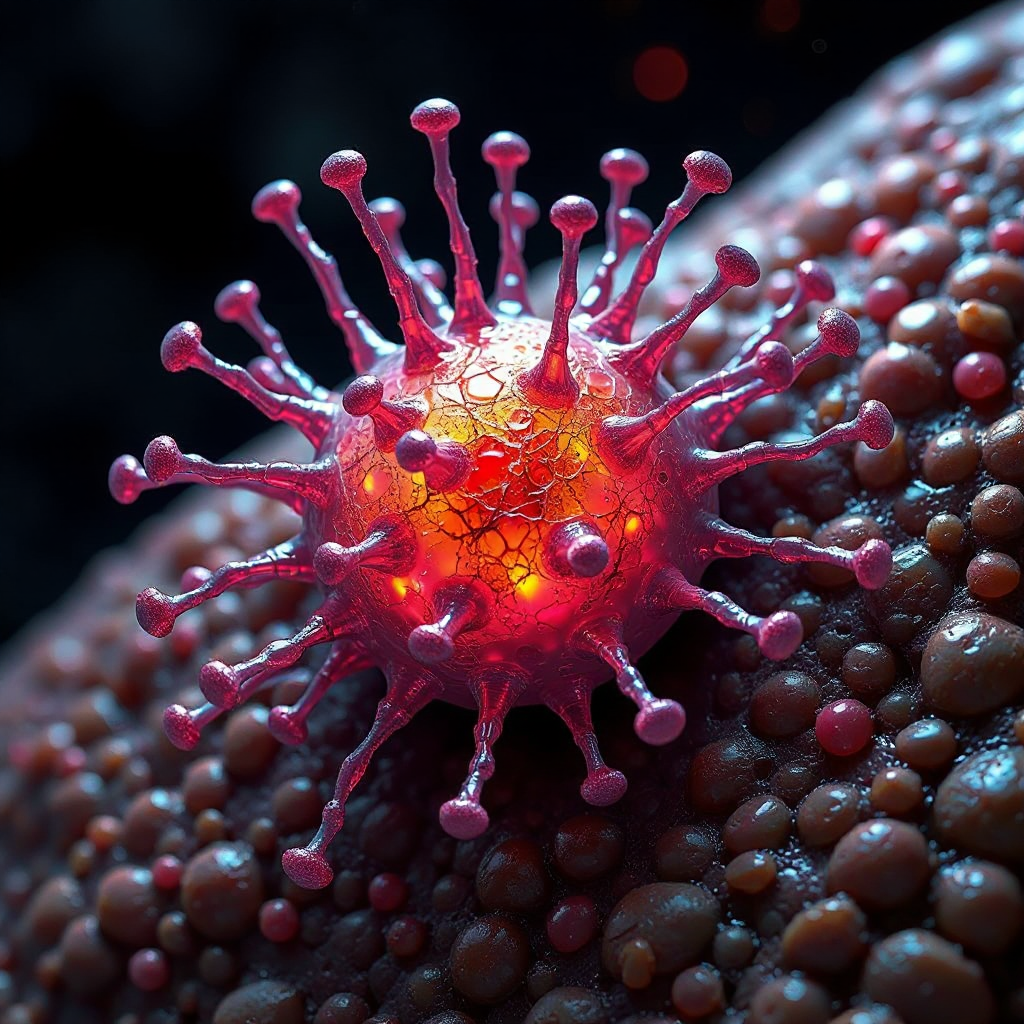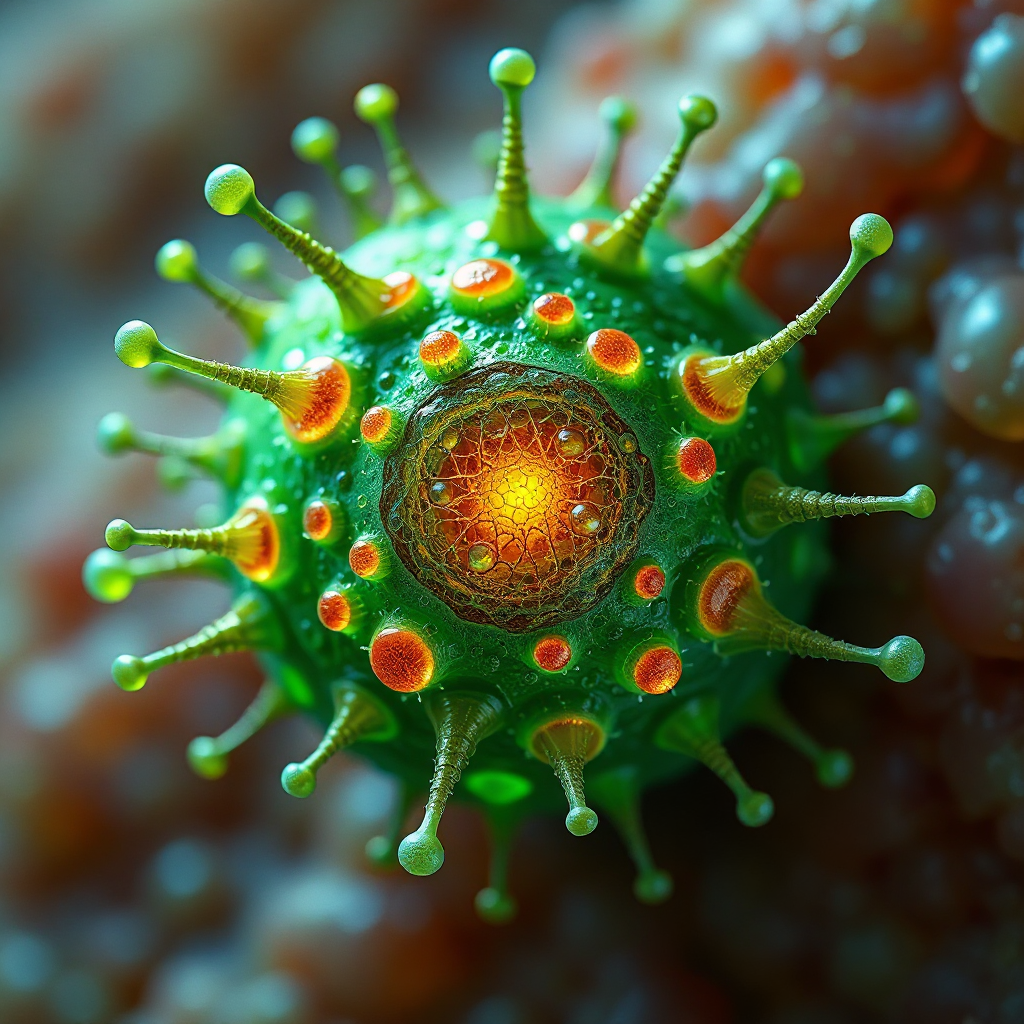What is Squamous Cell Skin Cancer and How to Recognize Its Symptoms

Squamous cell skin cancer is one of the most common forms of skin cancer. It begins in the squamous cells, which make up the outer layer of your skin. You might notice red, scaly patches or sores that don’t heal. Early detection plays a critical role in treatment success. When caught early, the five-year relative survival rate reaches 95 percent. This highlights the importance of paying attention to unusual changes in your skin and seeking medical advice promptly.
Key Takeaways
Squamous cell skin cancer is common and can be treated. Finding it early gives a 95% chance of survival.
Watch for red, rough patches or sores that won’t heal. These mean you should see a doctor.
Keep your skin safe from UV rays. Use sunscreen, wear hats and long sleeves, and skip tanning beds.
Check your skin often for changes. Visit a skin doctor every year for a check-up.
If your skin looks strange, see a doctor quickly. This helps treatment work better.
What is Squamous Cell Skin Cancer?
Understanding Squamous Cells
Your skin’s outer layer, called the epidermis, contains squamous cells. These flat, thin cells form the surface of your skin, acting as a protective barrier. They play a vital role in shielding your body from environmental damage, such as harmful UV rays and infections. However, when these cells undergo abnormal changes, they can become cancerous.
How It Develops
Squamous cell skin cancer begins with changes in the DNA of squamous cells. These changes disrupt the normal cell cycle, causing:
Rapid multiplication of squamous cells.
Extended cell lifespan beyond normal limits.
Overproduction of cells that invade and damage healthy tissue.
Ultraviolet (UV) radiation from sunlight or tanning devices is a leading cause of these DNA changes. Over time, the accumulation of abnormal cells can form tumors, which may spread to other parts of your body if left untreated.
Why Early Detection Matters
Catching squamous cell skin cancer early can significantly improve your chances of successful treatment. Many cases start as actinic keratoses, which are precancerous lesions that can be treated before they develop into cancer. Early detection also allows for less invasive treatments, such as local excision, which can completely remove the cancer.
Statistic | Description |
|---|---|
Prevalence | One in six Americans develops skin cancer at some point. |
Mortality | Skin cancer accounts for one-third of all cancers in the United States, but mortality from nonmelanoma skin cancer is rare. |
Treatment | Early detection improves prognosis significantly, especially for squamous cell carcinoma. |
By paying attention to unusual changes in your skin, you can take action before the condition worsens. Early diagnosis not only improves outcomes but also reduces the risk of complications.
Symptoms of Squamous Cell Skin Cancer

Common Signs
Recognizing the symptoms of squamous cell skin cancer early can make a significant difference in treatment outcomes. Here are some of the most common signs to watch for:
Red, scaly patches: These rough, reddish areas often feel dry or irritated.
Open sores that do not heal: Persistent sores, sometimes with raised edges, may bleed or crust over.
Wart-like growths or firm bumps: These can appear dome-shaped, hard, or even resemble a wart.
Other symptoms include brown spots that mimic age spots, tiny horn-like growths, or sores developing in old scars.
Symptom Description |
|---|
Open sore (often with a raised border) |
Brown spot that looks like an age spot |
Firm, dome-shaped growth |
Wart-like growth |
Tiny, rhinoceros-shaped horn growing from your skin |
Sore developing in an old scar |
If you notice any of these signs, it’s essential to monitor them closely and consult a healthcare provider if they persist or worsen.
Typical Locations
Squamous cell skin cancer often develops in areas exposed to sunlight. These include:
Sun-exposed areas: The face, neck, hands, lips, ears, and scalp are common sites.
Less common areas: It can also appear in places like the lips, inside the mouth, genitals, or anal cavity.
Other affected areas may include the tongue, throat, and even the stomach in rare cases.
When to Seek Medical Advice
You should seek medical advice if you notice any unusual changes in your skin, especially if:
A sore doesn’t heal after several weeks.
A growth changes in size, shape, or color.
You experience pain, bleeding, or crusting in a specific area.
Early consultation with a dermatologist can help confirm whether the symptoms are related to squamous cell skin cancer. Public health campaigns, such as free skin cancer screenings and educational programs like "Good Skin Knowledge," emphasize the importance of early detection. These initiatives provide valuable resources to help you stay informed and proactive about your skin health.
Risk Factors and Causes
Key Risk Factors
Prolonged Sun Exposure
Prolonged exposure to ultraviolet (UV) radiation is the leading cause of squamous cell skin cancer. UV rays from sunlight, tanning beds, and lamps damage the DNA in your skin cells. Over time, this damage accumulates, increasing your risk. Studies show that about 90% of nonmelanoma skin cancers, including squamous cell skin cancer, are linked to UV radiation. Spending long hours in the sun without protection raises your chances of developing this condition.
Fair Skin, Light Hair, and Light Eyes
Your natural skin type plays a significant role in your risk level. If you have fair skin, light-colored hair, or light eyes, your skin is more sensitive to UV damage. People with these traits tend to burn easily, which increases their likelihood of developing skin cancer.
History of Sunburns or Tanning Bed Use
A history of severe sunburns, especially those that cause blistering, can increase your risk. Indoor tanning also poses a significant threat. Research indicates that using tanning beds raises your risk of squamous cell skin cancer by 67%. If you’ve had precancerous lesions or previous skin cancers, your chances of recurrence are higher.
Additional Causes
Weakened Immune System
A weakened immune system makes you more vulnerable to squamous cell skin cancer. Conditions like leukemia or medications that suppress your immune system, such as those taken after organ transplants, increase your risk.
Exposure to Harmful Chemicals
Certain chemicals, such as arsenic, can damage your skin over time. Long-term exposure to these substances raises your risk of developing skin cancer.
Chronic Skin Injuries or Inflammation
Chronic wounds, scars, or long-lasting skin inflammation can lead to squamous cell skin cancer. For example, burns or infections that don’t heal properly may create an environment where cancerous cells can develop.
Tip: Protect your skin by using sunscreen, wearing protective clothing, and avoiding tanning beds. These steps can significantly reduce your risk of squamous cell skin cancer.
Diagnosis of Squamous Cell Skin Cancer
Diagnostic Methods
Identifying squamous cell skin cancer early requires a combination of medical expertise and diagnostic tools. Your doctor will likely begin with a thorough evaluation of your skin and medical history. This process includes discussing any symptoms you’ve noticed and examining suspicious areas.
Physical examination: During this step, your doctor will carefully inspect your skin for unusual growths, sores, or patches. They may also check nearby lymph nodes if there’s a concern about cancer spreading.
Skin biopsy: To confirm the diagnosis, your doctor will remove a small sample of the affected skin. This sample undergoes laboratory analysis to determine if cancer cells are present. A full-thickness biopsy is often necessary to provide a definitive diagnosis.
Lymph node biopsy: If there’s a possibility that the cancer has spread, your doctor may examine nearby lymph nodes for signs of metastasis.
In some cases, advanced techniques like Mohs' micrographic surgery may be used. This method is particularly effective for high-risk cases. It allows precise removal of cancerous tissue while preserving as much healthy skin as possible.
Stages of the Cancer
Understanding the stage of squamous cell skin cancer helps determine the best treatment approach.
Early-stage cancer: At this stage, the cancer is confined to the outer layer of the skin. It hasn’t spread to deeper tissues or other parts of the body. Early-stage cancer is often easier to treat and has a high success rate.
Advanced or metastatic cancer: In advanced cases, the cancer may invade deeper layers of the skin or spread to other areas, such as lymph nodes or distant organs. This stage requires more aggressive treatments, including radiation or chemotherapy.
Accurate staging ensures that you receive the most effective care. Early diagnosis and treatment can significantly improve outcomes, so it’s essential to consult a healthcare provider if you notice any concerning changes in your skin.
Treatment Options for Squamous Cell Skin Cancer
Early-Stage Treatments
Cryotherapy
Cryotherapy is a common treatment for early-stage squamous cell skin cancer. Your doctor freezes the cancerous cells using liquid nitrogen. This process destroys the abnormal cells, allowing healthy skin to replace them. Cryotherapy works best for small, superficial lesions. It is a quick procedure often performed in a dermatologist's office.
Curettage and Electrodessication
Curettage and electrodessication involve scraping away the cancerous tissue with a curette, a sharp surgical tool. Afterward, your doctor uses an electric needle to destroy any remaining cancer cells. This method is effective for small, well-defined tumors. It is minimally invasive and has a high success rate for early-stage cases.
Surgical Procedures
Mohs Surgery
Mohs surgery is one of the most precise treatments for squamous cell skin cancer. During this procedure, your doctor removes the cancer layer by layer, examining each under a microscope. This ensures that only cancerous tissue is removed, preserving as much healthy skin as possible. Mohs surgery has a cure rate of up to 99% for new squamous cell cancers and 95% for recurrent cases. It is especially beneficial for high-risk or facial tumors.
Excisional Surgery
Excisional surgery involves removing the tumor along with a small margin of healthy skin. This method is highly effective for well-differentiated lesions smaller than 2 cm, achieving a cure rate close to 99%. Your doctor typically uses an elliptical excision with margins of 4 to 6 mm to ensure complete removal.
Advanced Treatments
Radiation Therapy
Radiation therapy uses high-energy rays to target and kill cancer cells. It is often recommended for advanced or metastatic squamous cell skin cancer. This treatment is non-invasive and can be used when surgery is not an option.
Chemotherapy
Chemotherapy involves using drugs to kill cancer cells or stop their growth. It is typically reserved for cases where the cancer has spread to other parts of the body. However, chemotherapy may cause side effects such as fatigue, nausea, and skin rash.
Targeted Therapy or Immunotherapy
Targeted therapy focuses on specific molecules within cancer cells to block their growth. Immunotherapy, on the other hand, boosts your immune system to fight the cancer. Drugs like cemiplimab and pembrolizumab have shown promising results for advanced squamous cell skin cancer. These treatments are often used when other methods are not effective.
Note: Your doctor will recommend the best treatment based on the stage and location of your cancer. Early detection and treatment significantly improve outcomes.
Prevention of Squamous Cell Skin Cancer

Sun Protection Strategies
Use sunscreen with high SPF
Using sunscreen is one of the most effective ways to protect your skin from harmful ultraviolet (UV) rays. Choose a broad-spectrum sunscreen with a high SPF (30 or above) and apply it generously to all exposed areas of your skin. Reapply every two hours, especially after swimming or sweating. Sunscreen acts as a barrier, reducing the risk of DNA damage that can lead to squamous cell skin cancer.
Wear protective clothing and hats
Clothing can provide an additional layer of defense against UV rays. Opt for tightly woven fabrics or clothing with an ultraviolet protection factor (UPF) rating. Wide-brimmed hats shield your face, neck, and ears, while sunglasses protect your eyes and the delicate skin around them. These simple measures can significantly reduce your exposure to harmful sunlight.
Tip: Seek shade whenever possible, especially during peak UV hours between 10 a.m. and 4 p.m.
Avoiding Risky Behaviors
Limit tanning bed use
Tanning beds emit concentrated UV radiation, which increases your risk of developing squamous cell skin cancer by 67%. Avoiding tanning beds entirely is a crucial step in protecting your skin. Remember, there is no such thing as a "safe tan" from artificial sources.
Avoid prolonged sun exposure
Spending extended periods in direct sunlight, particularly during midday, can harm your skin. Plan outdoor activities for early morning or late afternoon when UV rays are less intense. If you must be outside, wear protective gear and apply sunscreen to minimize your risk.
Regular Skin Monitoring
Self-examinations
Performing regular self-examinations helps you detect unusual changes in your skin early. Look for new growths, sores that don’t heal, or changes in existing moles. Use a mirror to check hard-to-see areas, and don’t hesitate to ask for help if needed.
Annual dermatologist visits
Visiting a dermatologist annually ensures professional evaluation of your skin. Dermatologists can identify potential issues that might go unnoticed during self-checks. Early detection through professional screenings improves treatment outcomes and reduces complications.
Note: Barriers like lack of insurance or low awareness can prevent regular dermatologist visits. Overcoming these challenges is essential for effective skin cancer prevention.
Squamous cell skin cancer is a common condition, but early detection makes it manageable. You can protect yourself by recognizing symptoms, understanding risk factors, and seeking timely medical care. Prevention plays a vital role in reducing your risk. Regular skin checks and sun protection strategies, like using sunscreen and wearing protective clothing, are essential.
A diagnosis can also affect your mental well-being. Patients often feel better when they have clear information about their condition. Satisfaction with care helps reduce negative psychological impacts. Staying informed and proactive ensures better outcomes for your skin and overall health.
FAQ
What is the difference between squamous cell carcinoma and melanoma?
Squamous cell carcinoma develops in the squamous cells of your skin, while melanoma originates in melanocytes, the cells that produce pigment. Melanoma is more aggressive and likely to spread. Squamous cell carcinoma is less dangerous but still requires prompt treatment.
Can squamous cell skin cancer come back after treatment?
Yes, squamous cell skin cancer can recur, especially if you’ve had it before. Regular follow-ups with your dermatologist and consistent skin monitoring help detect any recurrence early. Protecting your skin from UV exposure reduces the risk of it returning.
Is squamous cell skin cancer contagious?
No, squamous cell skin cancer is not contagious. It develops due to DNA damage in your skin cells, often caused by UV radiation. You cannot pass it to others through physical contact or sharing personal items.
How long does it take for squamous cell skin cancer to develop?
Squamous cell skin cancer develops over months or years. Prolonged UV exposure or chronic skin injuries accelerate this process. Regular skin checks help you catch early signs before the condition worsens.
Can squamous cell skin cancer spread to other parts of the body?
Yes, advanced squamous cell skin cancer can spread to lymph nodes or distant organs. Early detection and treatment prevent this. If you notice unusual changes in your skin, consult a dermatologist immediately.
Tip: Stay vigilant about skin changes and schedule regular dermatologist visits to catch potential issues early.
See Also
Understanding Basal Cell Carcinoma: Key Symptoms to Watch For
Cervical Cancer Explained: Signs and Symptoms to Recognize
Identifying Leiomyosarcoma: Symptoms You Should Be Aware Of
Liposarcoma Overview: Recognizing Important Symptoms and Signs
